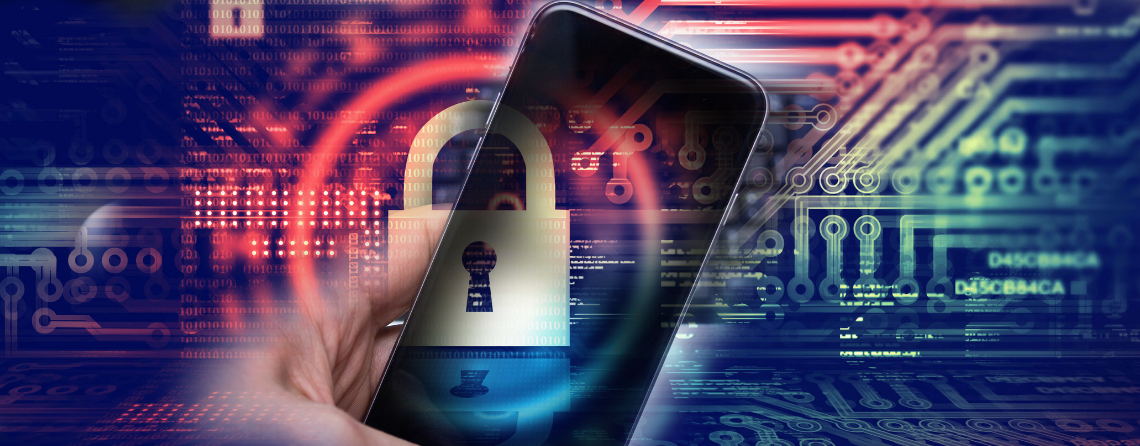
How To Protect Your Identity From Being Traded on the Dark Web
22 August 2024
With people spending more and more time online, the threat of identity theft continues to grow. According to the Australia Cyber Security Centre (ACSC), a cyber-attack occurs every 6 minutes, creating frequent opportunities for identities to be stolen and traded on the dark web. With such a high number of attacks, it pays to understand how identity theft works and how you can reduce the risk of your identity being stolen.
Identity theft in action
Identity theft occurs when someone steals your personal information such as your name, date of birth, or driver’s license number. This information is then used to create a false profile or replica identity, which is typically used to undertake fraudulent activity and can even lead to crimes being committed under your own name.
Your personal information can be stolen in several different ways, with the most common including:
-
Phishing – When a fake email or website encourages a user to enter their credit card details in good faith.
-
Smishing – Similar to phishing, this occurs when cybercriminals use text messages to try to get someone to share their personal information.
-
Skimming – This method uses a device that is mounted onto a card reader at a cashpoint which then stores the card’s information when swiped.
-
Malware – This is software that is secretly installed on your computer when you visit an unsafe site or download an infected file. It will scan any data stored in your computer and track when you enter information into forms.
-
Data leaks – These occur when a business that stores a large amount of personal data gets hacked and experiences a privacy breach.
-
Device theft – If your device is stolen and your email is hacked, cybercriminals can reset passwords and gain access to important accounts using your email address.
Once your personal information is taken, it can then be sold online via the dark web.
What is the dark web?
Perhaps you’ve heard of the dark web, but aren’t quite sure what it is?
When it comes to the internet, most people view it as one vast worldwide network online. But what many people don’t realise is that it’s made up of several layers, with the dark web layer being the least accessible of them all.
Layer 1: The surface web. This is content that can be indexed by search engines such as Google and includes the type of websites people access every day.
Layer 2: The deep web. This is content that isn’t indexed and sits behind firewalls, paywalls, and other types of security layers.
Layer 3: The dark web. This is a corner of the internet that most people can’t access and the one where personal data, passwords, and usernames are most in demand.
The dangers of the dark web
The dark web is hard to find, hard to get into, and hard to navigate – and it’s designed this way on purpose. It began in the mid-nineties as a way for intelligence to be shared around the world by the US government without fear of inception. With layers upon layers of encryption, it gives users protection and privacy. Over time, the secure elements of the dark web have captured the attention of criminals who now use it to facilitate criminal activity worldwide.
For cybercriminals dealing in identity theft, it’s become the place where stolen identities can be bought or sold online with anonymity. These details are then used to carry out a range of fraudulent activities, such as illegally accessing money, buying goods online, opening bank accounts – and more. And for most victims of identity theft, they have no idea their information has been taken or is being traded online until it’s too late.
Protecting your data from the dark web
Having your identity stolen can cost you time, money, and your credit score. In 2023, the Australian Institute of Criminology (AIC) found that victims of identity crime spent an average of 13 hours dealing with the damage caused. For some victims, the impact on their credit score also led to refusals of credit. This makes it harder for victims to secure the funds they need to achieve their goals, such as buying a home, big-ticket item, or dream holiday.
If you’re looking to reduce the risk of identity theft, there are simple steps you can take to lower your risks. These include:
-
Monitor security on all your devices – Personal information can be obtained through the theft or hacking of a device. Using anti-virus software and keeping devices locked can help maintain device security.
-
Update passwords – Using the same passwords for years and across multiple sites can open the risk of your data and identity being stolen. Changing passwords regularly and using strong passwords can help reduce this risk.
-
Engage an identity protection service – Identity protection services can monitor the dark web for your personal information. With identity protection in place, you’ll be notified every time your information is found on the dark web. This gives you the chance to take action - such as changing passwords or freezing your credit file - before your data can be used.
Interested in knowing whether your information is at risk before your finances are compromised? At Equifax, our purpose is to help our customers manage and protect their identity online. Find out how with our credit and identity protection plans.
Disclaimer: The information contained in this article is general in nature and does not take into account your personal objectives, financial situation or needs. Therefore, you should consider whether the information is appropriate to your circumstance before acting on it, and where appropriate, seek professional advice from a finance professional such as an adviser.
